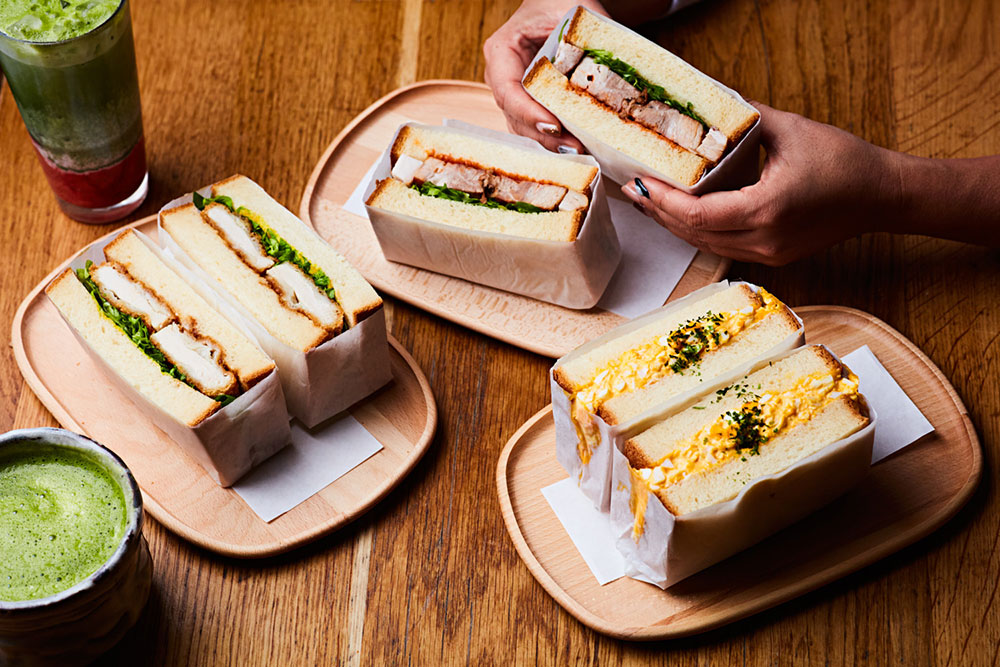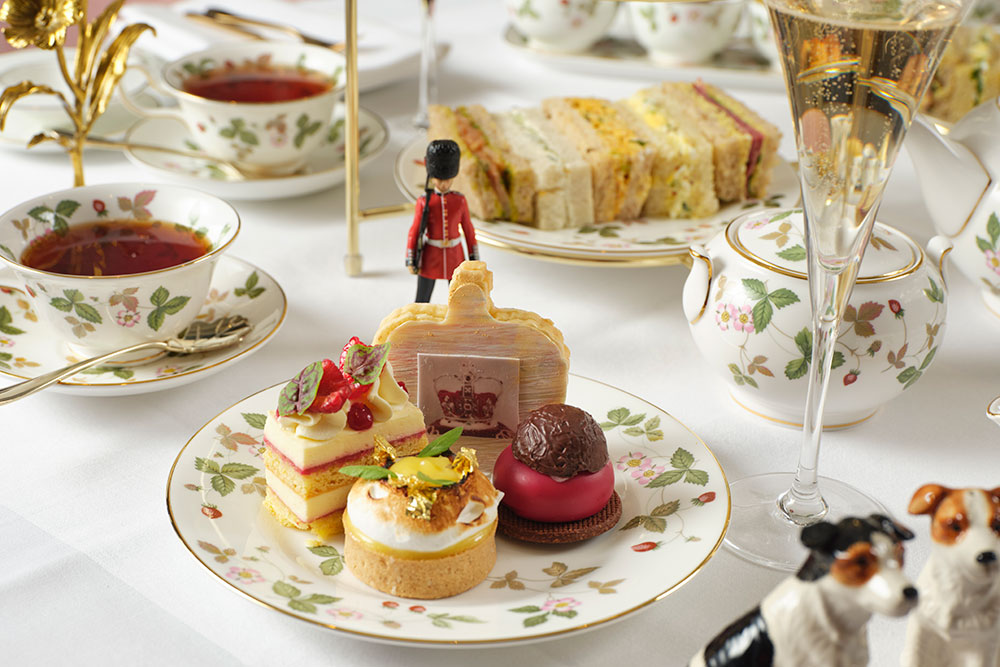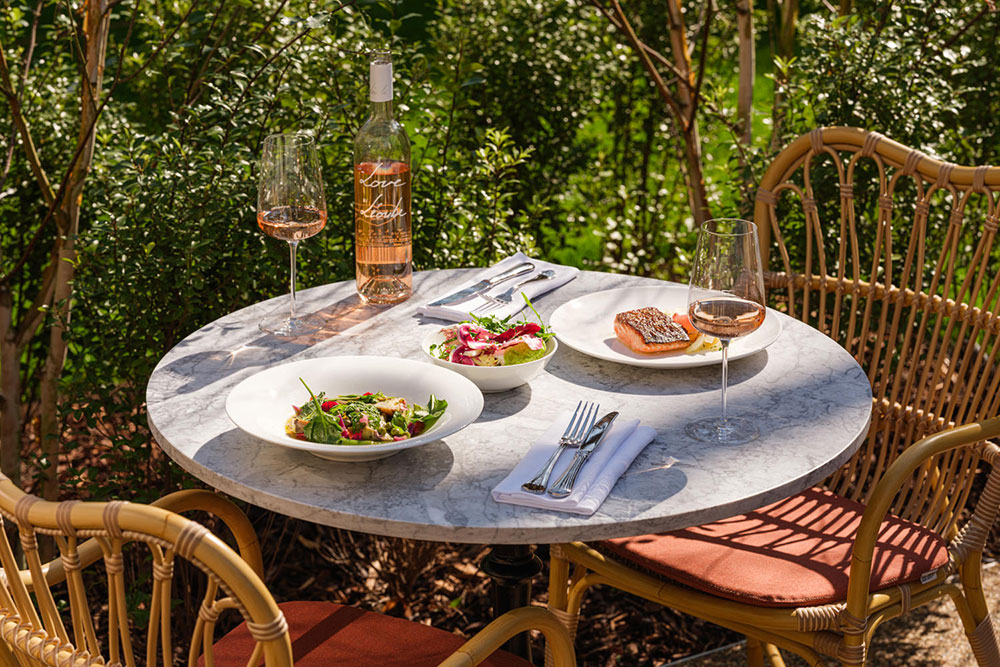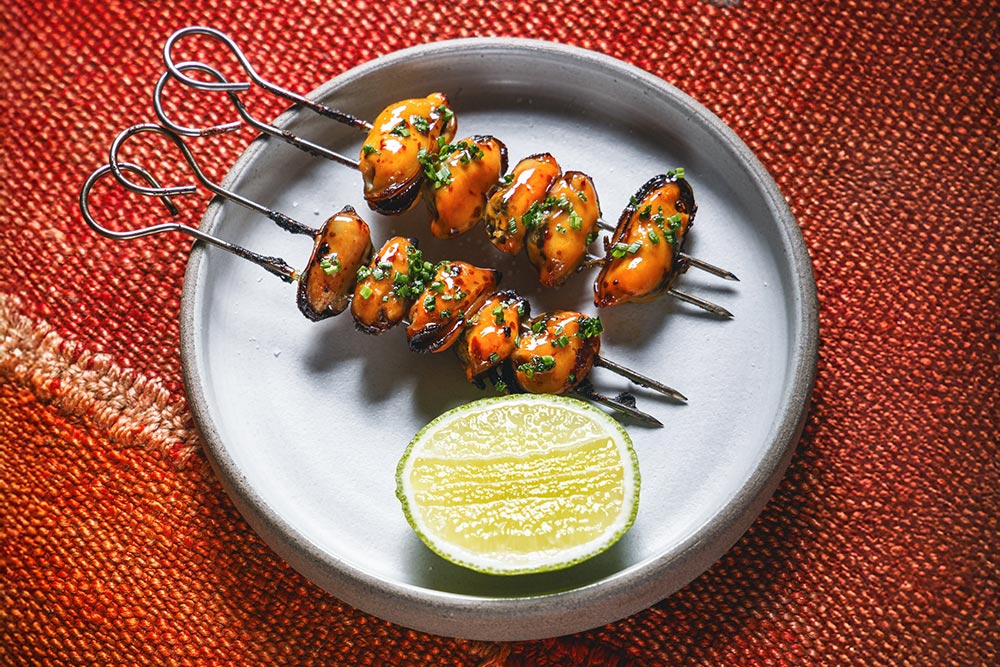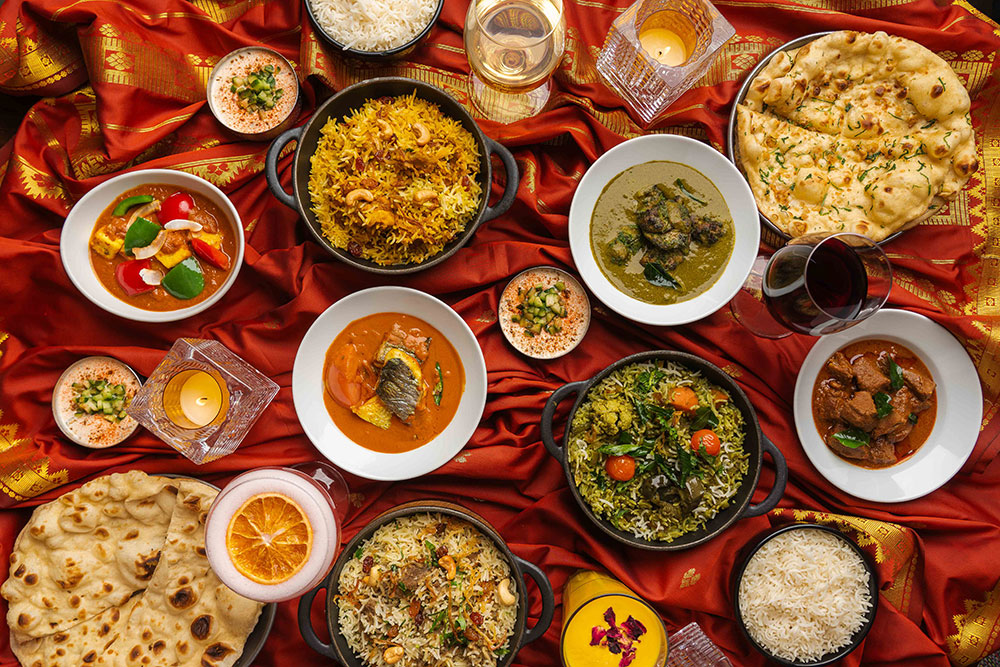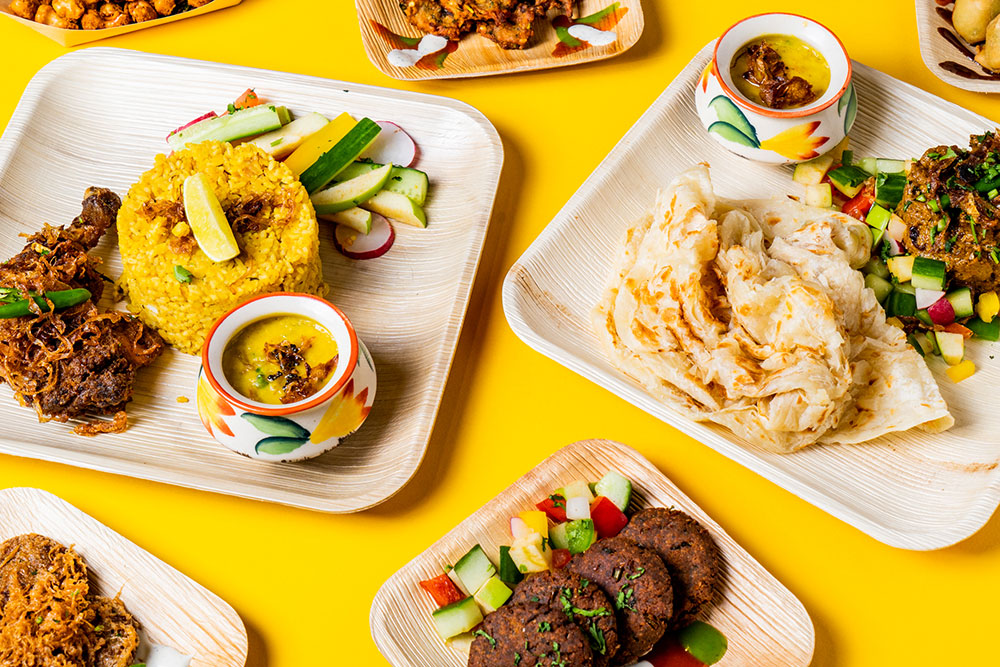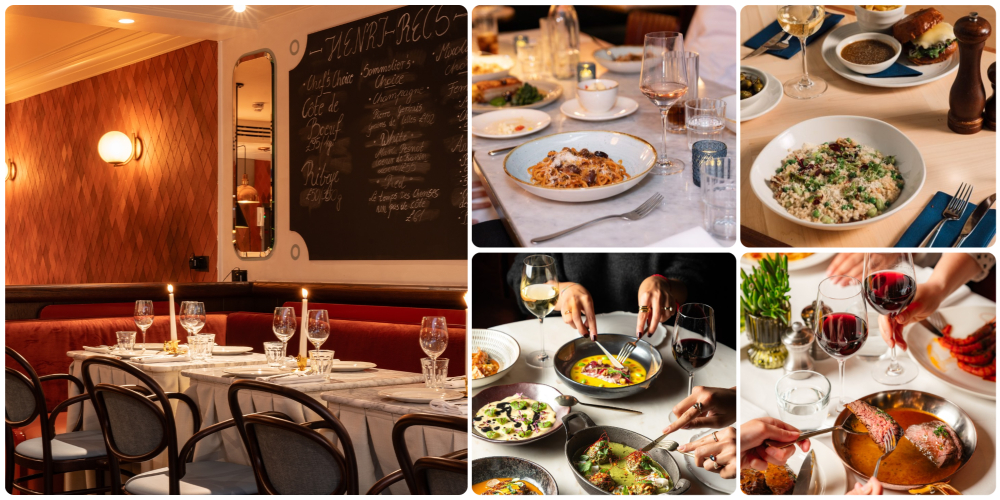With new restaurants opening up every week, it's always worth remembering that London has plenty of wonderful, old restaurants that are very much worth celebrating. Here's our guide to the city's restaurant history - we picked 50 years old as our starting point.
 Wiltons
Wiltons
55 Jermyn St, St. James's, London SW1Y 6LX
When did it open? 1742 - in current home since 1984
A restaurant so old it pre-dates the formation of the United States, Wiltons first started life as an oystermongers on Haymarket when George II was on the throne. Perhaps the best story associated with its long history is the change of ownership back in World War II. The then-owner Bessie Leal was rattled by a bomb landing nearby and asked one of her diners, Olaf Hambro, if he knew anyone who wanted to buy a restaurant. He ended up uttering the legendary words to "put the restaurant on the end of the bill".
 Rules
Rules
35 Maiden Lane, Covent Garden, London WC2E 7LB
When did it open? 1798
Another restaurant with an interesting back story on ownership, this passed from a descendent of the original Rule family to a British-born but Paris-based restaurateur Tom Bell when the two men just decided they fancied swapping businesses (and cities). In WWII it sold a lot of game as that was a non-rationed meat and now it owns its own estate in the Pennines from which it sources its grouse.
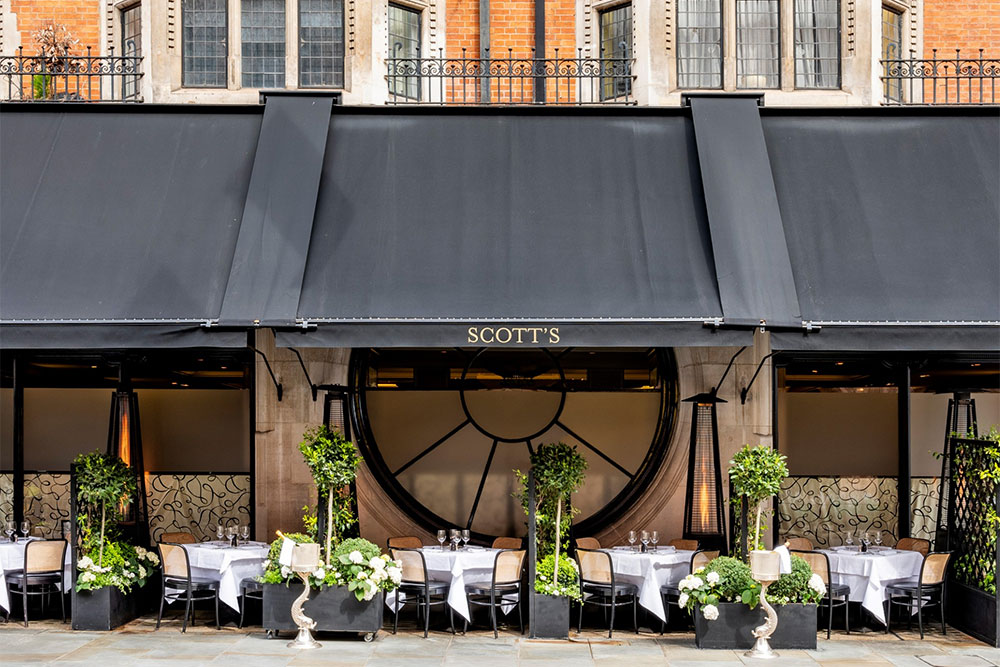 Scotts
Scotts
20 Mount Street, London W1K 2HE
When did it open? 1851 - in current home since 1967
Like Rules, Scott’s began life as an oyster warehouse, on nearby Haymarket, moving to Mount Street in 1967. It’s long been a draw to the rich and famous - they say that Ian Fleming discovered just how Bond liked his martinis by dining there. He dropped Scott's into three of the Bond novels - Moonraker, Diamonds Are Forever and You Only Live Twice. (We highly recommend you read Fleming’s 1956 article on the best restaurants in London for more on this).
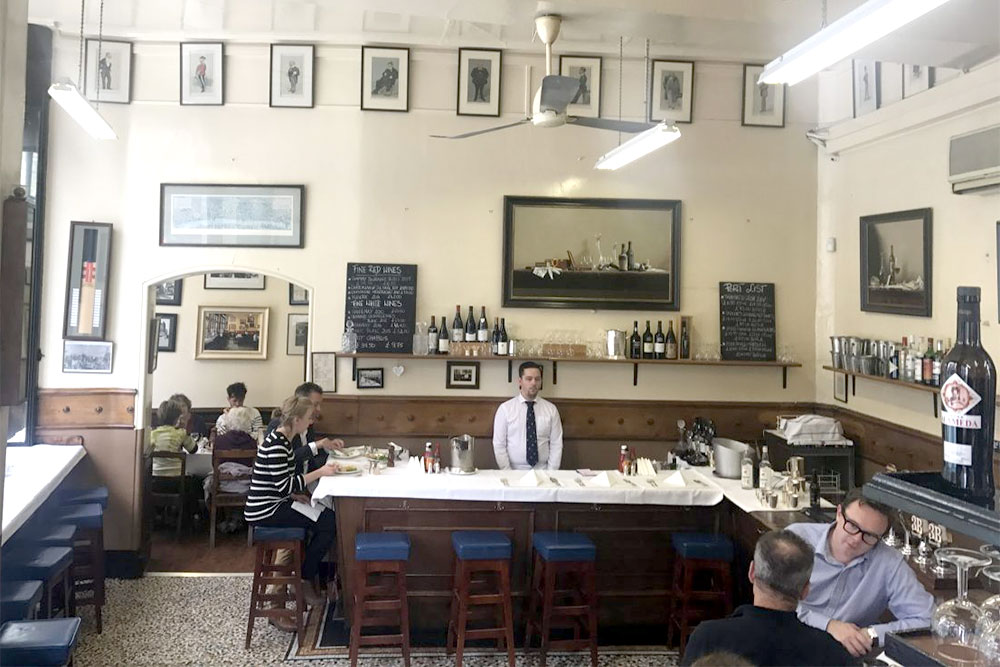 Sweetings
Sweetings
39 Queen Victoria St, London EC4N 4SF
When did it open? 1830 - in its current home since 1889
A restaurant so old-school that to this day it still only opens for lunch, the City institution that is Sweetings began life in Islington as a fish and oyster merchants before moving into the City. They’ve been here on their corner spot on Queen Victoria Street for more than a century serving up West Mersea oysters and spotted dick with a wine list that matches their City clientele.
Photo: Samphire & Salsify
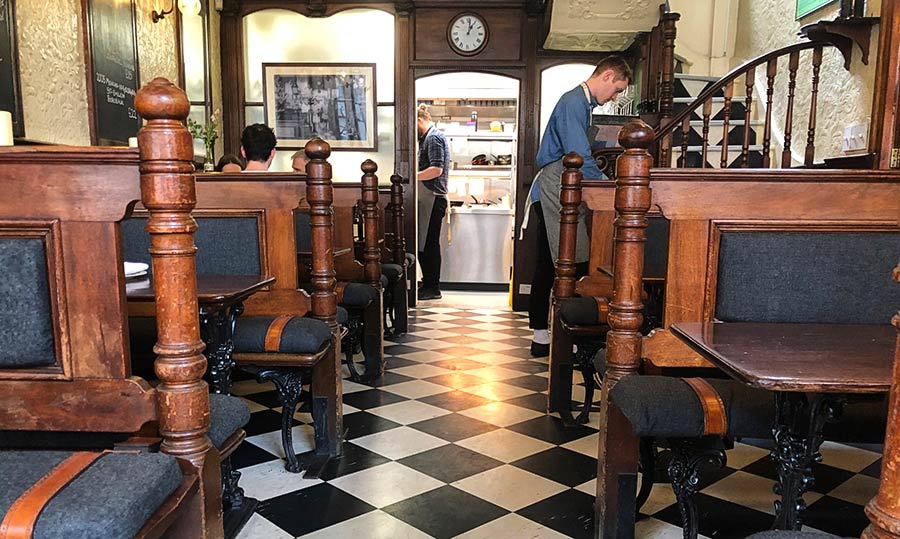 Quality Chop House
Quality Chop House
92–94 Farringdon Road, London EC1R 3EA
When did it open? 1869
The words 'Progressive working-class caterer' are etched on the windows of this much-loved Farringdon institution. It began life as a 'chop house' - think Victorian Blacklock. Since then the restaurant has been through various iterations, even surviving a brief closure in 2010. But under the current owners Will Lander and Daniel Morgenthau we predict it has many more happy and successful years ahead.
 The Savoy Grill
The Savoy Grill
The Savoy Hotel, Strand, London WC2R 0EU
When did it open? 1889
There's been a Savoy Grill since the hotel opened its doors in the late 19th century but it was only in 1904 when it moved to the front of the hotel that the Grill became one of the great pre and post-theatre haunts; a fitting tribute to owner and theatre impresario Richard D'Oyly Carte. A favourite spot of Sir Winston Churchill, and more recently the likes of Sir Michael Caine and the Beckhams, it's been run by Gordon Ramsay for the past 20 years.
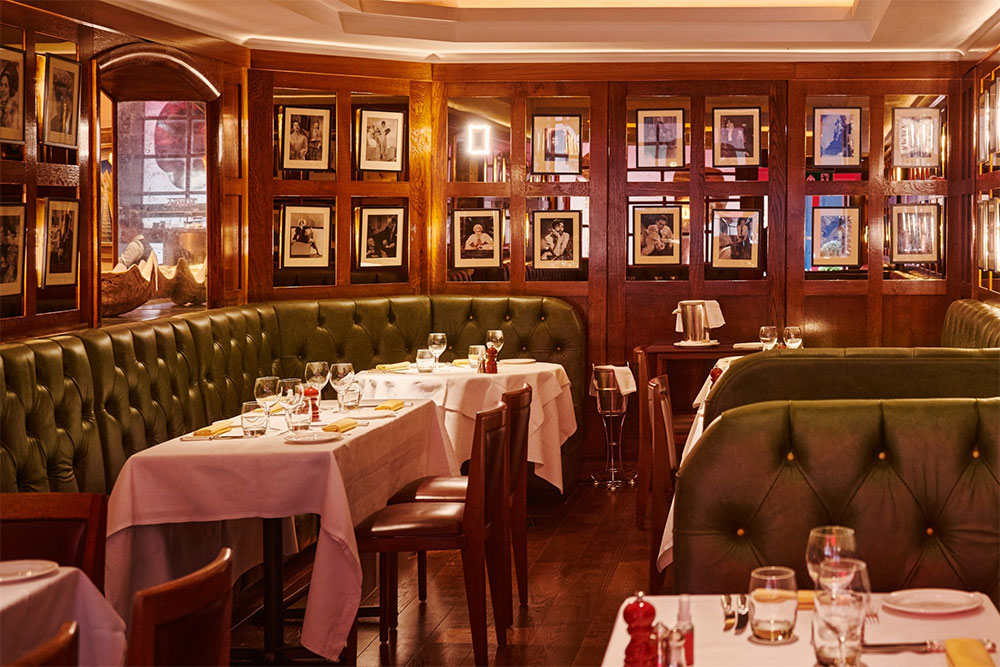 J Sheekey
J Sheekey
28-34 St. Martin's Court, London WC2N 4AL
When did it open? 1896
Victorian politicians knew how to keep themselves well-fed - just take PM Lord Salisbury who gave stallholder Joef Sheekey permission to open a restaurant on St Martin's Court. The only downside was Sheekey had to give the PM gratis dinners to him and his mates whenever he wanted. Now this swanky seafood spot is more likely to see the stars of stage and screen through its doors than MPs. Our favourite spot is up at the bar for a bit of counter dining.
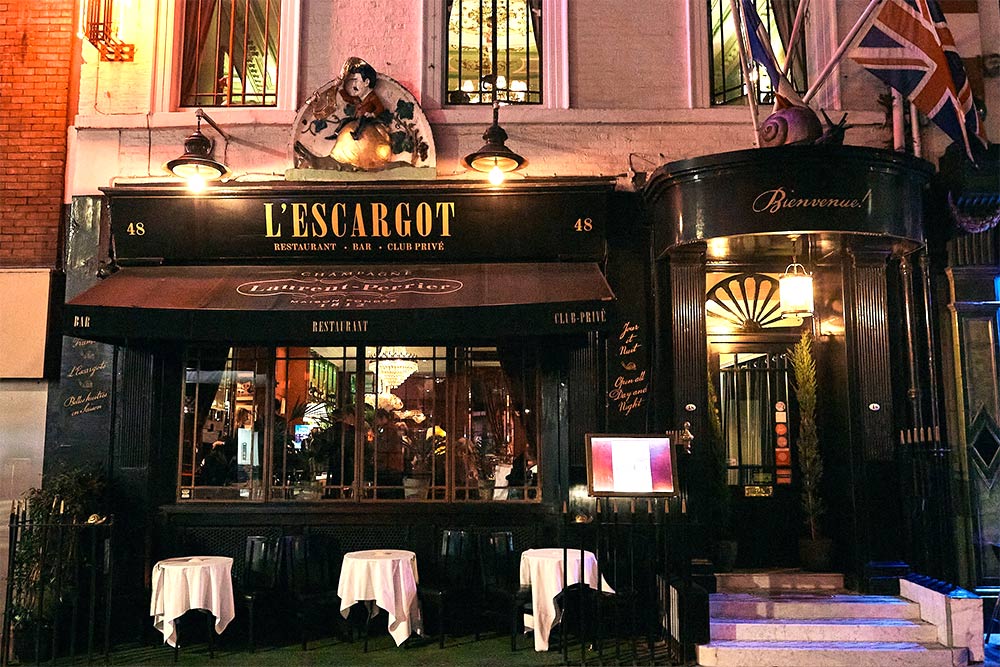 L’Escargot
L’Escargot
48 Greek St, Soho, London W1D 4EF
When did it open? 1896 - in current location since 1927
Billed as London's oldest French restaurant, the origins of L'Escargot begin under a different name when it was first opened by Georges Gaudin as Le Bienvenue further down the street. Needing bigger and better premises he moved to the current spot in 1927 whereupon he renamed the restaurant after its signature dish (there used to be a snail farm down in the basement here). That colourful bust on the frontage is of Gaudin himself. From there the restaurant progressed through several notable owners including Nick Lander and Jancis Robinson and Jimmy Lahoud and Marco Pierre White. Although it's currently closed, it's just about to reopen for the latest act in its long history.
 M. Manze
M. Manze
87 Tower Bridge Rd, London SE1 4TW
When did it open? 1902
If you’re wondering why so many of London’s pie and mash shops have a Manze in the title, it’s all down to the OG Manze, Michele, who came to London from Ravello back in 1878. He was the first in the family to open a pie, mash and eels shop in 1902 here on Tower Bridge Road which they now bill as ‘London’s oldest pie and mash shop’. Clearly, the rest of the family thought it was a good business, with several of his brothers also getting in on the game.
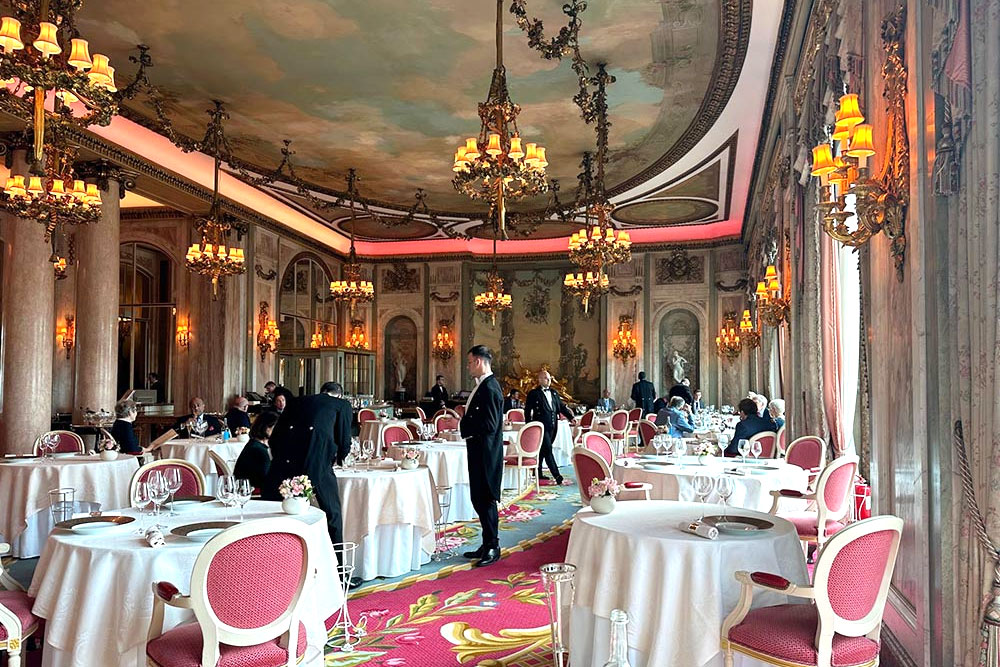 The Ritz Restaurant
The Ritz Restaurant
150 Piccadilly, London W1J 9BR
When did it open? 1906
It was a big deal for London when the Ritz opened. Patronised by the Prince of Wales and one of the only places you could go as a young unmarried woman without the burden of a chaperone, this was a perfect place for gossip and mischief (along with great food). To this day it's the kind of place the late Queen would host a dinner for the now King Charles, in her Jubilee Year along with being one of the few restaurants in London to offer pressed duck (or pigeon). John Williams MBE now presides over the kitchen team and spectacular dining room, which has had a Michelin star since 2017.
 Bentley’s
Bentley’s
11-15 Swallow Street, London W1B 4DG
When did it open? 1916
Stand-up Essex comic turned restaurateur Bill Bentley opened Bentley's back in 1916 after his wife's encouragement to invest in oyster beds in Mersea and then this restaurant in the heart of Piccadilly. For years he managed to run his show business career alongside one of the city's most popular seafood restaurants. In 2005, after a period in which it had been run by indifferent owners, the restaurant was bought by its former Head Chef, Richard Corrigan who took it back to its former glory. A plate of oysters up at the counter here with a glass of Champagne is one of London’s great pleasures.
 The Ivy
The Ivy
1-5 West Street, London WC2H 9NQ
When did it open? 1917
The Ivy has been a popular destination for theatre folk ever since it first opened at the tail end of the First World War. A venture between owner Abel Giandolini and Maître d’Hôtel Mario Gallati (who later opened Le Caprice) it was the kind of place you might find Laurence Olivier dining with his then-wife Vivien Leigh. Those famous stained glass windows allowed light to flood in, but protected the diners' privacy. Now owned by Richard Caring it's still a popular place for A-listers (there's a lovely Extras blooper scene with Ricky Gervais featuring it here).
 Veeraswamy
Veeraswamy
Victory House, 99-101 Regent St, London W1B 4RS
When did it open? 1926
The oldest Indian restaurant on this list (and indeed the oldest surviving Indian restaurant in the UK), Veeraswamy was established in 1926 by Edward Palmer, a retired British Indian Army officer, the great-grandson of an English General and an Indian Mughal princess. Veeraswamy was his grandmother's family name. Early menus show dishes including chicken dhansak, lamb biryani and tikka kebabs. Our favourite story connected with the restaurant involves early doors fanboy Prince Axel of Denmark who loved the food so much he had a case of Carlsberg sent there every year - maybe being the first accredited link between curry and beer.
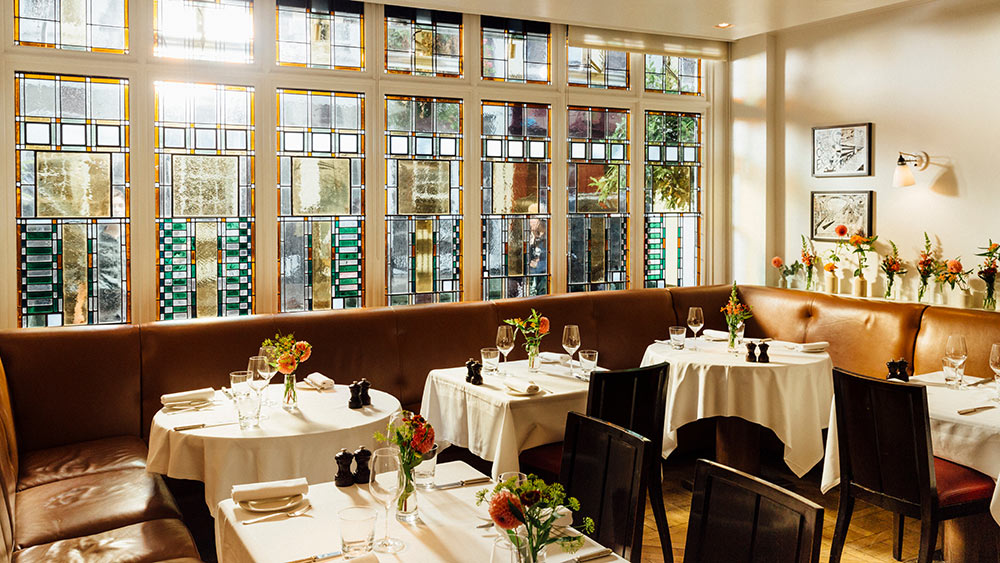 Quo Vadis
Quo Vadis
26-29 Dean Street, London, W1D 3LL
When did it open? 1926
Probably the most famous thing about Quo Vadis is the building's former occupant - one Karl Marx who began writing Das Kapital here. It's been a restaurant since the 1920s, opened by one Peppino Leoni (he had to take out the princely sum of £800 to buy it). In the following years, it survived a decade's ownership by Marco Pierre White and Damien Hirst before passing into the hands of Sam and Eddie Hart. The arrival of chef Jeremy Lee in 2012 cemented the restaurant's reputation for the current generation of restaurant goers. If you'd like to know how critic AA Gill managed to shoehorn men's nipples, the clitoris and pick-up lines into a restaurant review of Quo Vadis back in 2008, you can find that here.
 Quaglino's
Quaglino's
16 Bury Street, London SW1Y 6AJ
When did it open? 1929
There's always been a glamorous crowd at Quaglino's ever since its eponymous owner Giovanni Quaglino opened it at the end of the 1920s. The mixture of good food and a live band meant you could always rely on a scene here. To give you an idea of the calibre of clientele, when the late Queen dined at Quaglino's in 1956 it was the first public restaurant that a reigning king or queen had ever been known to dine in. And Judy Garland held the wedding party for her fifth marriage here. The restaurant got another lease of life in the Nineties when it was bought by Terence Conran who reopened it with a host of cigarette girls, a red rope policy and the most covetable (and eminently nickable) ashtrays in London.
 Mon Plaisir
Mon Plaisir
19-21 Monmouth St, London WC2H 9DD
When did it open? 1943
This old-school French restaurant was opened by brothers David and Jean Viala during the Second World War (General de Gaulle was a fan) and since then has only two other owners. If you're going now, you've just missed a fifty-year-long reign by Alain Lhermitte who ensured the enduring affection of legions of Londoners and French ex-pats alike but retired in 2022. The current menu won't have changed much since the early days - with dishes like onion soup, tartiflette and beer tartare with pommes allumettes - and that's the way we like it.
 Franco’s
Franco’s
61 Jermyn St, London SW1Y 6LX
When did it open? 1945
If it wasn't the first Italian restaurant to open in London, Franco's was definitely in that first wave - taking an existing English restaurant called Franks and changing the name just enough to give it a spritz of Italian glamour. It's now owned by the same family who also own Wiltons (the Hambro family). Way before rosé became the drink du jour, Franco's went big with more than 60 bottles of rosé on their wine list and its terrace is still one of the most coveted alfresco tables in St James.
 Daphne’s
Daphne’s
112 Draycott Ave, London SW3 3AE
When did it open? 1964
Named after its founder, the casting agent Daphne Rye whose own claim to fame came from 'discovering' actor Richard Burton this swanky Italian became an immediate hit with the Sixties film and theatre crowd. In the Nineties, under the ownership of Mogels Tholstrup it became a favourite of Princess Diana. For the past two decades, guests have been welcomed by General Manager Gabriele Esposito who's now almost part of the furniture here.
 Vijay
Vijay
49 Willesden Ln, North Maida Vale, London NW6 7RF
When did it open? 1964
When it opened in the Sixties, Vijay was the first South Indian restaurant in London. The decor at this venerable Kilburn institution mightn't have changed all that much since the early days, but here it's definitely more a case of 'if it ain't broke' than needing to move with the times. The original head chef used to work for George Harrison back in the day and more than four decades on the dosai are as good here as they always were. And, as a sign that it's still on top form, Vijay’s been shortlisted for the Best Dining Experience in the 2023 London Curry Awards.
 Lido
Lido
41 Gerrard St, London W1D 5QF
When did it open? 1969
One of London's first Chinese restaurants (the earliest were mainly around Limehouse but haven't survived this long) Lido was here from the start of the development of what's now Chinatown - at a time when most restaurants here served up what would have been very anglicised Cantonese-inspired menus. Now though it's all about their amazing dim sum with their har gau and char siu puffs singled out for the highest praise.
 Vasco e Piero’s Pavilion
Vasco e Piero’s Pavilion
11 D'Arblay St, London W1F 8DT
When did it open? 1971 - in current location since 2021
Now on D'Arblay Street, the original Vasco e Piero came about after a chance conversation between General Manager Vasco Matteucci and a customer in the restaurant where he worked. It turned out the chap owned a building on Oxford Street with a restaurant space and Vasco - along with his now ex-partner Piero - felt that it was the perfect time to introduce London to traditional Umbrian food. Next up was a move into Soho where the restaurant stayed until its 50th birthday before landlord issues saw it briefly closed. Still in Soho and still drawing in longstanding customers like Michael Palin and Ralph Fiennes, if you come here without having the calves liver, you're probably doing it wrong.
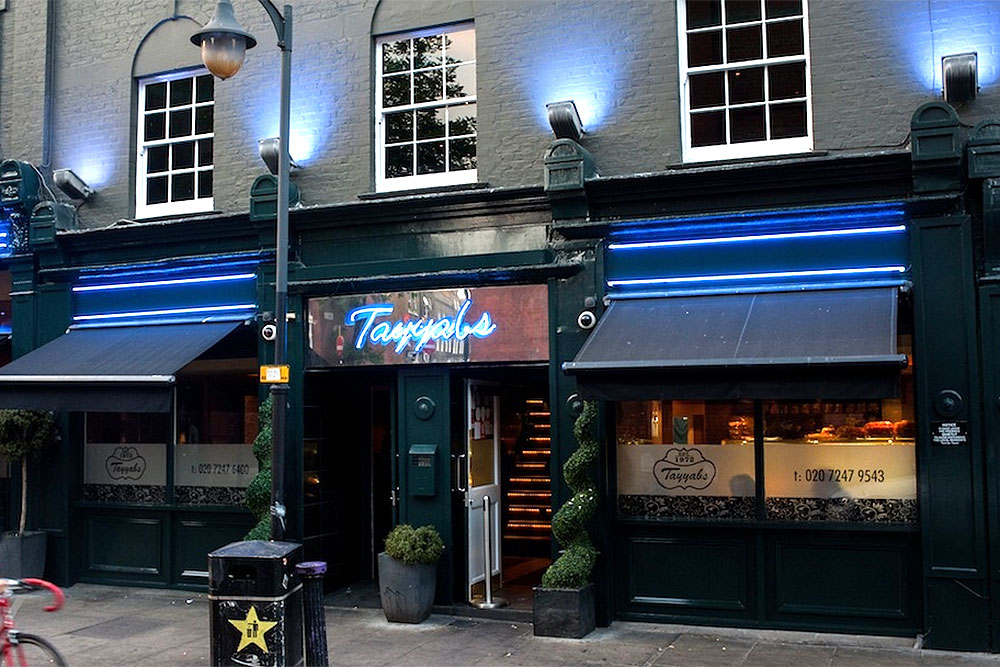 Tayaabs
Tayaabs
83-89 Fieldgate Street, London E1 1JU
When did it open? 1972
Mohammed Tayyab is the man who first introduced East Londoners to the singular joys of his sizzling lamb chops. Taught by his mother to cook before he left Pakistan for England, Mohammed quickly became the cook in his group of colleagues and flatmates in Whitechapel. So, when the cafe opposite his digs became free it seemed to make total sense to switch careers from the rag trade to the restaurant business. Over the years, the business has expanded down Fieldgate Street and it's now Mohammed's three sons who run the restaurant, serving what they declare to be 'the finest Punjabi cuisine' in London.
 The Jam
The Jam
289A King's Rd, London SW3 5EW
When did it open? 1972
Better known as the treehouse restaurant, The Jam looks like no other place in London with tables perched literally on top of each other, with ladders provided to reach the top level. It's been a part of the King's Road since the swinging sixties, serving up a short and sweet Italian menu of pasta and pizza.
Subscribe to hear the latest from Hot Dinners

